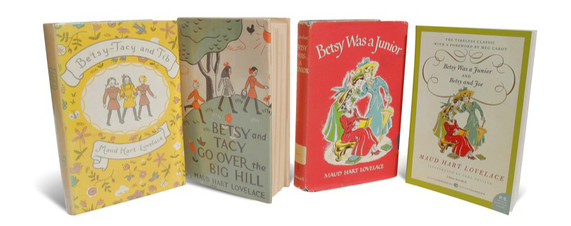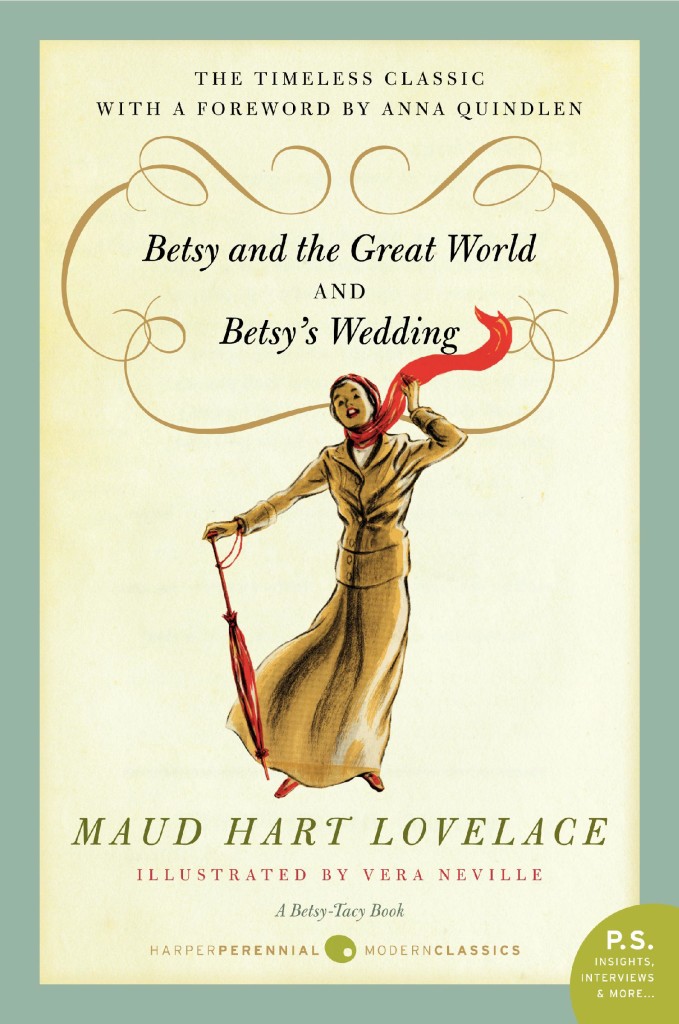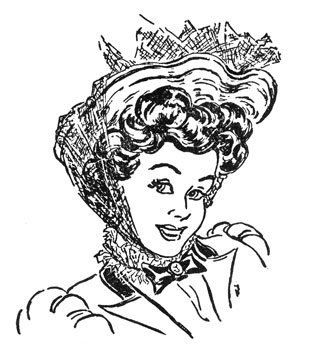Between my ABCs of Travel and several interview-type things, I’ve been answering the question about why and how I started traveling. As I wrote about in The Beginning, I attribute my love of books to planting the travel seed.
However, I rarely discuss books on this blog, even though reading is probably the number one thing I do with my free time (and I have that little English degree and all).
SO!
I’m starting a new series dedicated to the books that have inspired me to travel throughout the years.
First up: the Betsy-Tacy series by Maud Hart Lovelace.
This series, originally written between 1940 and 1955, is a fairly autobiographical series surrounding the author’s life in small-town Minnesota, California, and Europe, during the early 20th century. The series starts when Betsy Ray, the main protagonist of the series, and her best friend for life, Tacy Kelly, meet at the age of five. The subsequent books travel through their childhood, through high school, into college, and into their early years of marriage.
One particular book of the series is my favorite (although they all took turns): Betsy and the Great World.
Aha! While the title of my blog may seem self-explanatory, it was in fact inspired by this book. In Betsy and the Great World, Betsy embarks on a year-long adventure in Europe. Despite being a good student and dedicated to her writing, Betsy occasionally was too sociable, and that combined with health problems put her behind in school and unhappy with her college life. Rather than finishing, Betsy and her father agreed that travel might be the education she needs, and therefore, she was sent to Europe. Betsy’s extreme homesickness, her short-lived love affairs (with people and places), her joy and simple triumphs, and her witness to World War I being declared in London was some of the most inspirational travel stories I read as a young girl. If Betsy could do it, and enjoy it, learn from it despite the struggles, then so could I.
This book and this series will always be a classic to me, and books I re-read approximately once a year.
I loved these books for many reasons, one of them being the outstanding female friendship that is at the center of the novels. Betsy and Tacy meet when they move across the street from each other, and is a rare example in literature of unwavering friendship. Betsy in particular is friendly and has many acquaintances, she has many phases and many dreams and often silly fantasies. But their friendship never wavers. There is none of the drama or jealously so often present, no fights over boys, and despite the pain and changes that come along with growing up, they continue to be friends, even after marriage. Betsy is more outgoing and interested in boys, while Tacy is very shy, but despite this, they are steadfast. I found this friendship fascinating–while I have many amazing friends, I don’t have any that have been this true for my whole life.
Even though she was living almost 100 years before my time, Betsy Ray was just like me. She dreams of being a great writer, she hopes to see the Great World but gets homesick when she does. She longs to change everything about herself and always comes back to who she really is, looks for pieces of herself at home and away, and plans to see the Taj Mahal by moonlight and write all about it. She loves to write and dreams of being one for most of her life, but gets distracted by other things and neglects her craft. She isn’t always the best writer in the room and her school essays are often too dramatic, but she always vows to improve. Sometimes she does, and sometimes…she doesn’t.
Despite how much I related to Betsy, we lived in different worlds. Hers seemed so quaint to me–the women had pompadours and wore things called Merry Widow hats, she didn’t have electricity until she was in her early teens, and only a few people in her life eventually owned an “auto.” She waltzed at school dances and entertained herself by singing around the piano and had a father that invited the entire neighborhood over for Sunday supper.
Unlike Betsy’s world, though, in my part of the world, women can vote and easily work outside the home and choose from a myriad of professions. I knew I would always work outside the home, but in Betsy’s time, women were more likely to marry and have children. Not Betsy, though! From the beginning of the series–yes, when she is five–she is writing stories and it is clear to those around her that she is meant to be a writer. The same goes for her older sister, Julia, who longs to travel the Great World as an opera singer and spends hours practicing at the family piano.
What always struck me most about Betsy’s writing dreams was her confidence in her future as an author. Even more surprising was her family’s confidence, too: her mother even insists that Betsy could be the next Shakespeare (although her father is a little more down-to-Earth). Her family sacrifices for two of their three daughters to work outside the home, and I imagine this was rare in those days, and in some places continues to be so. Although I live in a world where I so often heard I could “be anything I wanted,” those closer to me cautioned against writing for its impracticality. I was told to “keep it as a hobby” and search for more solid, dependable employment.
Some may disagree, but to me, Betsy Ray is a feminist. It may have been 100 years since she was dreaming in Deep Valley, Minnesota, but some things are still the same. Betsy had a choice, and she chose to write. Maud Hart Lovelace, the author, was Betsy in real life and ended up writing an endearing, enduring series. In both of their lives, while they did have a husband and a child, they also had jobs. While they decided to learn to cook and keep house, they kept at least one day a week purely for writing. To me, that’s the root of feminism–the choice to do what you want, be what you want, live how you want. It’s a better choice to be made with equal opportunities before you.
Every year, I reread a few of the Betsy stories, and remind myself that if Betsy, a flawed young women just like me, can be writer, if Betsy can dream of seeing the Great World–and manage to do so!, then so can I. Every year, I read these books to be inspired by her confidence and faith, and to remind myself to make my choice and see that others can make theirs, too.
p.s. Visit Maud Hart Lovelace here.
Linking up with The Lady Errant and She is Fierce.



